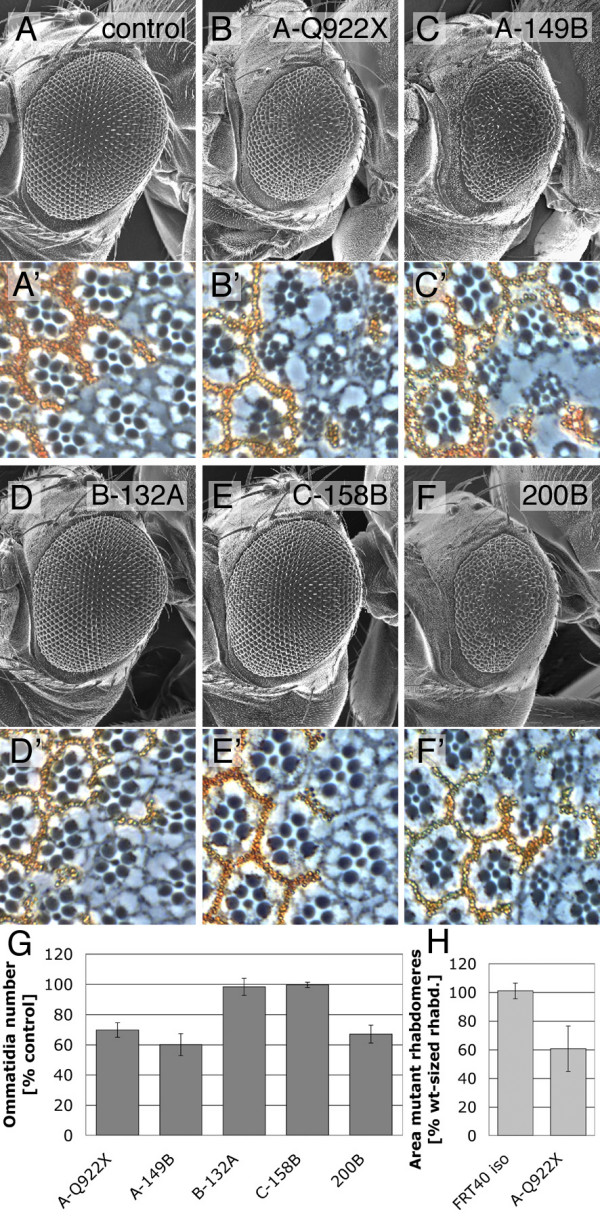Figure 2.

The bunA growth phenotype. (A-F) SEM pictures of mosaic eyes generated with the eyFLP/FRT system. The alleles used are indicated. A precise excision of the P-element GE12921 serves as control (A). Eyes largely homozygous for bunA mutations (B and C) and for the deletion allele 200B (F) are small. (A'-F') Tangential sections of mosaic eyes containing homozygous mutant photoreceptors (marked by the lack of pigmentation) surrounded by heterozygous (and therefore wild-type sized) photoreceptors. A cell size reduction is apparent in clones of bunA mutant cells (B', C', and F'). bunB (D') and bunC (E') mutant photoreceptors do not differ from control photoreceptors. (H) Rhabdomere size is 40% decreased in bunA mutant ommatidia (B', only clones without differentiation defects were analyzed). The area enclosed by the rhabdomeres of photoreceptors R1-6 in unpigmented mutant ommatidia relative to neighboring pigmented ommatidia was measured (n = 7). Clones were induced early during development (24–48 h after egg deposition (AED)) using the hsFLP/FRT technique. (G) Statistical analysis of ommatidia number in mosaic eyes (n = 6) relative to control lines (n = 6, FRT40Aiso is used as control for EMS-induced bunA alleles, and precise excisions of the respective P-element insertions for the deletion alleles). Mosaic eyes largely consisting of bunB and bunC mutant clones have a normal number of ommatidia. Eyes from female flies were examined in all analyses.
